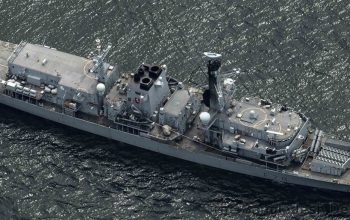Faced with increasingly sophisticated regional adversaries the Bangladesh Army has had to adjust and respond accordingly to the new challenges. One of those key challenges is to effectively suppress the enemy’s air defences in coordination with the Air Force and Navy.
The respective tri-services each have their strategies and tools to work with however this report will focus on the deployment of Loitering Aerial Munitions (LAM) in the Bangladesh Army.
The primary function or mission of the LAM is to acquire a target during a loitering, then conduct a self-destructive strike to neutralise the target.
Compared to cruise missiles and unmanned aerial vehicles, the LAM is characterised by:
- Cost effectiveness for expendable one-time use
- Irrecoverable once launched
- Contains built-in warhead
- Is usually stealthy
- Can loiter or hover over or near targets for a couple of hours
- Is equipped with target acquisition sensors
- Can be controlled via two way datalink
- Has a shorter range than cruise missiles or UCAVs
- Flight speed is typically lower than CMs and UCAVs
- Warhead is usually much smaller than CMs
- Physical dimensions are also smaller than CMs or UCAVs
Nearly 20 countries around the world employ LAMs in their armed forces including neighbouring India, which uses IAI Harpy and IAI Harop LAMs. China too is known to operate the IAI Harpy, C-901, WS-43 and ASN-301 in its military’s inventory.
Friendly countries such as Turkey developed their own LAMs such as STM-made Kargu and Alpagu.
The Bangladesh Army was initially interested in acquiring the WS-43 LAM from China through ALIT Co in 2015. The Artillery Directorate at the Army Headquarters identified the value of such self-destructive aerial platforms, which would revolutionise the way it conducts its operations during wartime through means of accurate and cost-effective technologies.
While the WS-43 LAM was recommended for inclusion, the Army faced problems in its adaption largely due to lack of skilled manpower at soldier level. It was realised to employ increasingly advanced technologies the Army would need to arrange basic and intermediate technical training of its troops.
Since then the Army established purpose-built IT infrastructure, training labs and universities to ensure its personnel are well accustomed to the use of advanced technologies.
This is paying dividends now as the Army is increasingly acquiring more advanced military hardware from Western countries in view of fully realising Forces Goal 2030 military modernisation blueprint.
As Unmanned Aerial Vehicles (UAV) are being introduced in different fighting arms and supporting elements the introduction of LAMs in the future will become smoother.
The Bangladesh Army is now poised to take advantage of the benefits of LAMs in its tactical deployments with both fixed and vertical-rotor-based LAMs.
We understand the Bangladesh Army is investigating the possibility of inducting LAMs developed by the WB Group of Poland. Officials from the Bangladesh Army and the Armed Forces Division discussed about the company’s Warmate LAM during an exhibition in Poland last year.
There are ample opportunities also for STM, which designed and manufactured winged and rotary models of LAMs that allow cost effective means of neutralizing targets in a variety of missions such as SEADs and even counter-terrorism.
We understand the Turkish Land Forces (Army) acquired 500 such LAMs that have been used in different Middle-Eastern operational theatres with success.
Such munitions could be built in Bangladesh with transfer of technology from a partner country, therefore decreasing costs further. We strongly urge the Bangladesh Ordnance Factories (BOF) in coordination with the Artillery Directorate at the Army Headquarters to proceed with a project to incorporate locally-made LAMs in to the Army’s inventory.
Such munitions can be provided to Special Forces, Border Guards and Police SWAT in view of counter terrorism and anti-narcotics operations. This will be cost effective and decrease risk to own manpower or civilian population during times of operational necessities.




